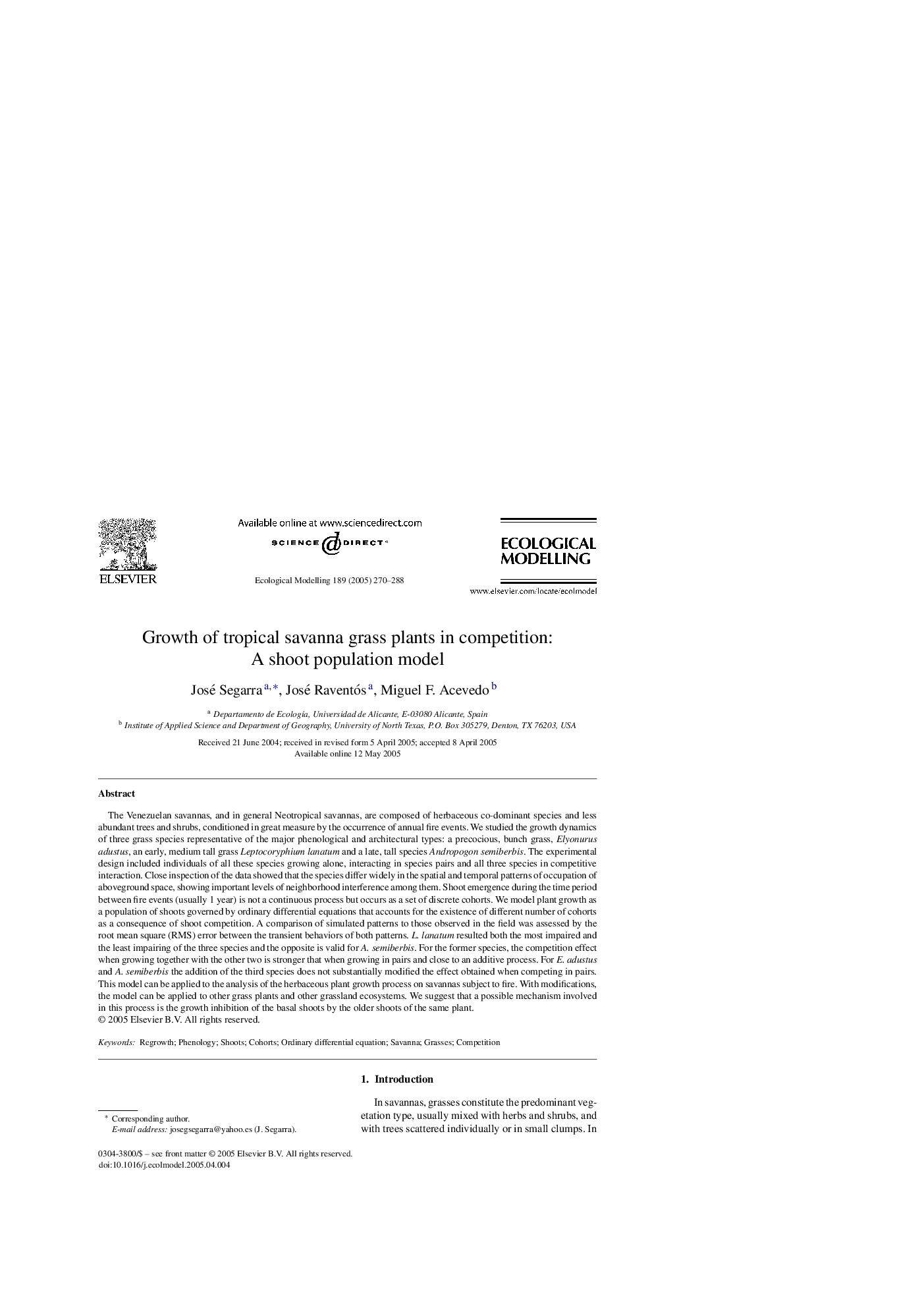| Article ID | Journal | Published Year | Pages | File Type |
|---|---|---|---|---|
| 9443411 | Ecological Modelling | 2005 | 19 Pages |
Abstract
The Venezuelan savannas, and in general Neotropical savannas, are composed of herbaceous co-dominant species and less abundant trees and shrubs, conditioned in great measure by the occurrence of annual fire events. We studied the growth dynamics of three grass species representative of the major phenological and architectural types: a precocious, bunch grass, Elyonurus adustus, an early, medium tall grass Leptocoryphium lanatum and a late, tall species Andropogon semiberbis. The experimental design included individuals of all these species growing alone, interacting in species pairs and all three species in competitive interaction. Close inspection of the data showed that the species differ widely in the spatial and temporal patterns of occupation of aboveground space, showing important levels of neighborhood interference among them. Shoot emergence during the time period between fire events (usually 1 year) is not a continuous process but occurs as a set of discrete cohorts. We model plant growth as a population of shoots governed by ordinary differential equations that accounts for the existence of different number of cohorts as a consequence of shoot competition. A comparison of simulated patterns to those observed in the field was assessed by the root mean square (RMS) error between the transient behaviors of both patterns. L. lanatum resulted both the most impaired and the least impairing of the three species and the opposite is valid for A. semiberbis. For the former species, the competition effect when growing together with the other two is stronger that when growing in pairs and close to an additive process. For E. adustus and A. semiberbis the addition of the third species does not substantially modified the effect obtained when competing in pairs. This model can be applied to the analysis of the herbaceous plant growth process on savannas subject to fire. With modifications, the model can be applied to other grass plants and other grassland ecosystems. We suggest that a possible mechanism involved in this process is the growth inhibition of the basal shoots by the older shoots of the same plant.
Related Topics
Life Sciences
Agricultural and Biological Sciences
Ecology, Evolution, Behavior and Systematics
Authors
José Segarra, José Raventós, Miguel F. Acevedo,
